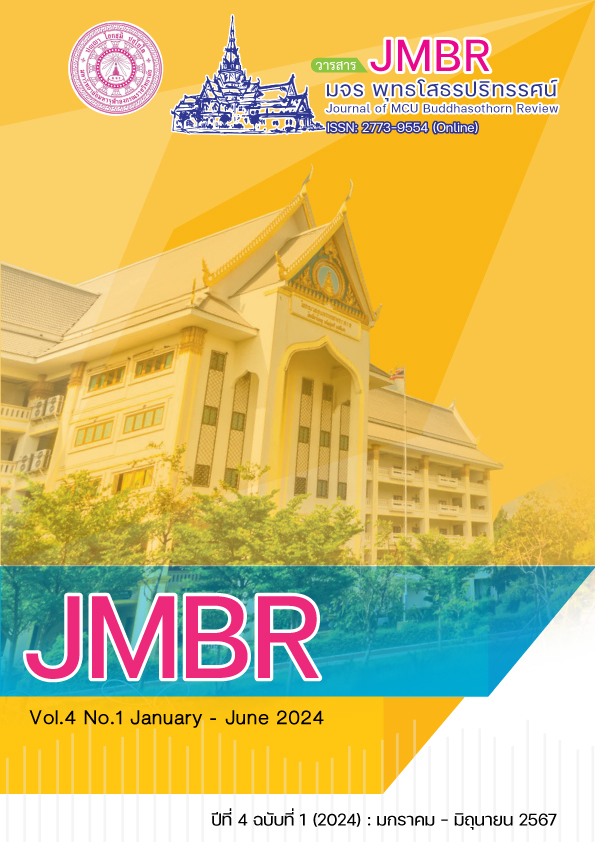Afterthoughts On the Walking On the Footpath
Main Article Content
Abstract
This article aims to propose the afterthoughts on the idea behind the scenes about walking on the footpath, where is full of the currently disorder and a lot of confusion. People didn't know some path to walk on the left side or the right side. When they didn't know it, they were walking in the middle or they were going randomly. Thereby, it became obstruction on the footpath and on the traffic surface. The author introduced the concepts of historical, philosophical, and ergonomic dimensions that are reflecting the pedestrian culture and increasing the more influenced disorder culture. Then, we suggested the guidelines for the usages of footpaths for people on pedestrian traffic, because they have to obey the traffic rules and pedestrian etiquette. The knowledge in this article will be used as a guideline for the footpath builders and the social leaders within society to design and set the customs or the rules of walking on the footpath for tidiness and lead the well-order into a society with an appropriate level of order.
Article Details

This work is licensed under a Creative Commons Attribution-NonCommercial-NoDerivatives 4.0 International License.
ต้นฉบับที่ได้รับการตีพิมพ์ในวารสาร มจร พุทธโสธรปริทรรศน์ วิทยาลัยสงฆ์พุทธโสธร มหาวิทยาลัยมหาจุฬาลงกรณราชวิทยาลัย ถือเป็นกรรมสิทธิ์ของวิทยาลัยสงฆ์พุทธโสธร มหาวิทยาลัยมหาจุฬาลงกรณราชวิทยาลัย ห้ามนำข้อความทั้งหมดหรือบางส่วนไปพิมพ์ซ้ำ เว้นเสีย แต่ว่าจะได้รับอนุญาตจากวิทยาลัยฯ เป็นลายลักษณ์อักษร และเพื่อให้เป็นไปตามกฎหมายลิขสิทธิ์ ผู้เขียนทุกท่านต้องลงลายมือชื่อในแบบฟอร์มใบมอบลิขสิทธิ์ บทความให้แก่วารสาร พร้อมกับบทความต้นฉบับที่ได้แก้ไขครั้งสุดท้าย นอกจากนี้ ผู้เขียนทุกท่านต้องยืนยันว่าบทความต้นฉบับที่ส่งมาตีพิมพ์นั้น ได้ส่งมาตีพิมพ์เฉพาะในวารสาร มจร พุทธโสธรปริทรรศน์ เพียงแห่งเดียวเท่านั้น
References
กีรติ บุญเจือ. (2546). ปรัชญาภาษาชาวบ้าน. กรุงเทพฯ: มหาวิทยาลัยเซนต์จอห์น.
จีรนันท์ อินทร์ประเสริฐ. (2561). วิธีการตัดสินใจหลายหลักเกณฑ์สำหรับการประเมินสภาพแวดล้อมที่เหมาะสมสำหรับการเดินเท้าในพื้นที่มหาวิทยาลัยในจังหวัดเชียงใหม่ (วิทยานิพนธ์วิทยาศาสตรมหาบัณฑิต การออกแบบและวางแผนสิ่งแวดล้อม). เชียงใหม่: มหาวิทยาลัยแม่โจ้.
ทรรศชล ปัญญาทรง. (2551). แนวทางการออกแบบเพื่อพัฒนาทางเท้าในย่านพาณิชยกรรมอโศก กรุงเทพมหานคร (ปริญญาสถาปัตยกรรมศาสตรมหาบัณฑิต). กรุงเทพฯ: จุฬาลงกรณ์มหาวิทยาลัย.
ธนธรณ์ คล้ายจินดา, สิทธิกานต์ สัตย์ซื่อ. (2566). มองเมืองจากทางเดินเท้า. กรุงเทพฯ เมืองวุ่นวาย ซับซ้อนและไม่สำคัญ. สืบค้นเมื่อ 26 มิ.ย 2566, จากhttps://theurbanis.com/mobility/26/06/2023/ 14399.
ประโยชน์ ส่งกลิ่น. (2561). ปรัชญาการเมืองยุคหลังสมัยใหม่. มหาสารคาม: หจก.อภิชาติการพิมพ์.
เอนก สุวรรณบัณฑิต. (2563). ทบทวนความคิด. กรุงเทพฯ: หจก.ปิสเปส.
เอนก สุวรรณบัณฑิต. (2564). ความรู้และสันติภาพ. กรุงเทพฯ: หจก.ปิสเปส.
โครงการรักเดิน หมอชาวบ้าน และ สสส. (2557). เดินศาสตร์. กรุงเทพฯ: มูลนิธิหมอชาวบ้าน.
Chobrod. (13 พฤษภาคม 2564). ทำไมไทย ขับรถเลนซ้าย เผยที่มาของการจราจรซ้ายมือและขวามือ. สืบค้นเมื่อ 15 พฤษภาคม 2567, จากhttps://chobrod.com/tips-car-care/ทำไมไทย ขับรถเลนซ้าย-12154
โรงเรียนบ้านหนองประดู่. (2557). เดินขวา...พิสูจน์คน(ดี) โครงงานคุณธรรรม. สืบค้นเมื่อ 13 พฤศจิกายน 2565, จาก www.kruchiangrai.net
สำนักข่าวอิสรา. (13 พฤศจิกายน 2565). เปิดหลักออกแบบ-เกณฑ์สร้าง “ทางเท้า” พื้นที่สาธารณประโยชน์มากกว่ามีไว้แค่เดิน. สืบค้นเมื่อ 15 พฤษภาคม 2567, จาก https://www.isranews.org/article/isranews-scoop/106552-isranews-238.html
What is the rule of a pedestrian to walk, on the left or the right?. Retrieved September 13, 2022, From www.quora.com
Cozy Physical Therapy. (13 September 2022). Occupational Ergonomics – Working and Walking Postures. Retrieved May 13, 2024, From https://www.cozypt.com/blog/occupationalergonomics-working-and-walking-postures/
Crocker LG. (1979). Order and disorder in Rousseau’s social thought. PMLA, 94(2), 247-260. Retrieved September 13, 2022, https://doi.org/10.2307/461889
Lorand R. (2000). Putting disorder in order. The Jerusalem Philosophical Quarterly. 49: 282-300. Online Etymology Dictionary. Retrieved September 13, 2022, From http://www.etymonline.com.
Tattersall I. (2009). Human origins, Out of Africa. PNAS, 106(38), 16018-16021. Retrieved September 13, 2022, From https://doi.org/10.1073/pnas.090320710
Yee LE. (21 September 2015). Etiquette needed on pedestrian paths. Retrieved September 13, 2023, from https://www.straitstimes.com/forum/letters-on-the-web/etiquette needed-on-pedestrian-paths


